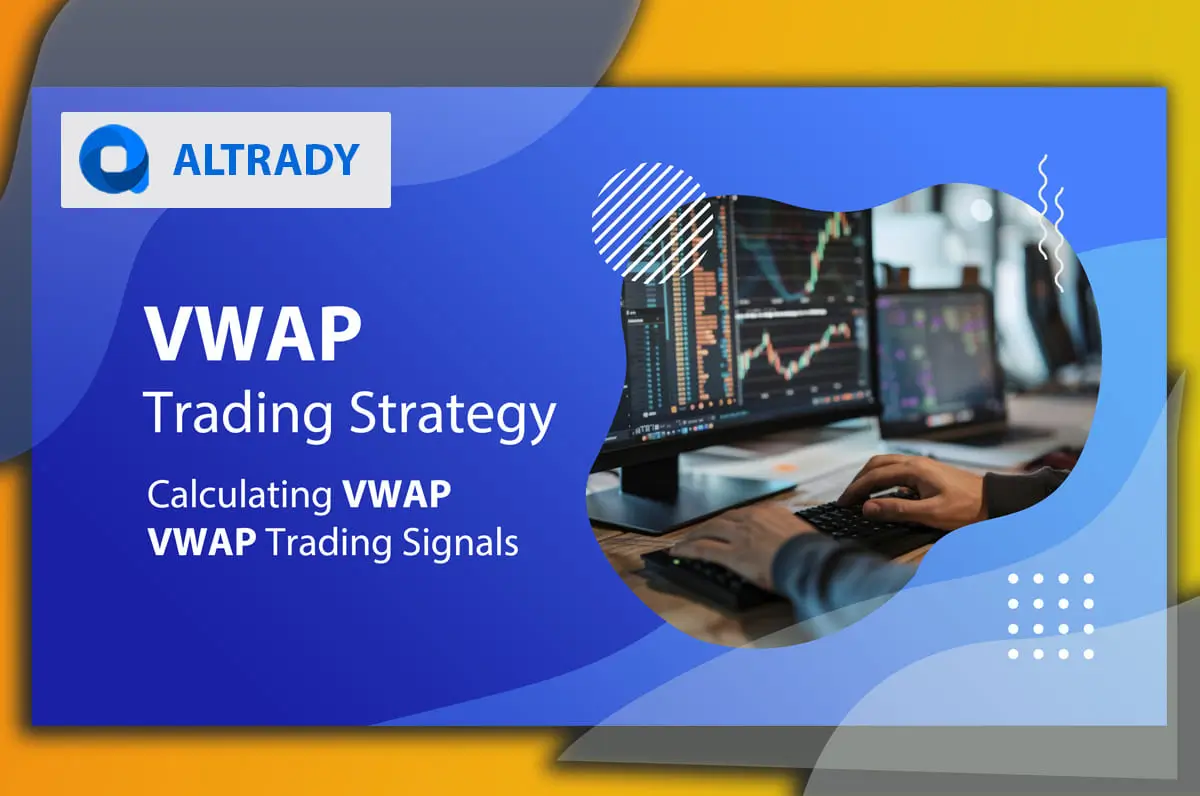Black Friday is loading…
Get 40% off with Altrady’s yearly plan and take the lead.
.svg)
.svg)
.svg)
.svg)
.svg)
.svg)
.svg)
.svg)
.svg)
.svg)
.svg)
.svg)
.svg)

The Volume-Weighted Average Price has gained a special place in the realm of technical indicators. It is a tool suitable for methodic traders who seek more beneficial forecasts without the need to face noisy signals. In a market condition like the one offered by cryptocurrencies, carrying only VWAP signals may not be the best approach.
However, there are other ways to choose and boost the effectiveness of VWAP performance. In this article, we will discuss some of the most relevant aspects of this and how to overcome crypto market conditions with it.

Cryptocurrency trading is an activity known for its volatility, leading to notable price changes in the short term. Technical indicators offer a solution to survive those environments, and that is the case of the Volume-Weighted Average Price (VWAP), a technical tool offering a wide spectrum viewpoint for the measurement of the average price at which a crypto asset has been traded during a specific timeframe.
VWAP adds weight to both the price and volume of each trade. It essentially spots out the average price at which a certain amount of a crypto asset was bought and sold within a given period.
An increased VWAP proximate to the current price suggests buyers were dominant, potentially moving the price up. Conversely, a low VWAP indicates sellers were in control, potentially moving the price down.
VWAP is, after all, a sophisticated tool that lies on a mathematical formula calculating the sum of prices multiplied by the volume of each trade.
Let's try to break it down:
Where:
For crypto trading, as remarked previously, the inherent volatility is a special consideration to carry. The sophisticated calculation of the VWAP does not come alone but with a step back in its application: VWAP carries with lagging nature and can generate false signals in highly volatile markets.
The speedy change of prices may be so fast that VWAP is not able to react accurately to the current market sentiment.
So what would be a proper way of using VWAP for crypto trading?

A price quoting consistently above VWAP suggests a possible uptrend with strong buying pressure.
The opposite scenario, when the price is consistently below VWAP, suggests a potential downtrend with selling power.
If the price comes closer to VWAP from either direction, it might signal a consolidation phase or a trend reversal. This is especially accurate after a strong directional move.
VWAP can act as Dynamic Levels, across dynamic support or resistance representing relevant supply and demand zones. During a downtrend, the price could face momentary support at the VWAP before bouncing back up. Conversely, during an uptrend, the price may face resistance at the VWAP before potentially breaking through.
VWAP can be the right choice for those traders looking to craft a strategy with a very methodical approach and specific forecasts. The lagging characteristic of this indicator may not offer much versatility compared to others, more responsive, and stands out in other scenarios.
Let's try to outline some common strategies:
This strategy is simple and states the following:
VWAP breakout can help across consolidation phases in the market, let's see:
VWAP can offer reliable signals for very specific cases at the cost of its lagging nature, other indicators can help to confirm signals in fast-paced environments.
Let's discuss some interesting combinations of VWAP:

As with any other indicator, traders must be aware of:
The Volume-Weighted Average Price is by far a useful tool for technical analysis. Although it may not be so flexible, it can be combined with other tools and provide a broader viewpoint of the market conditions.
In Altrady, you can continue learning more about other indicators suitable for VWAP and start testing the discussed strategies with a FREE trial account on paper trading. Don't miss this chance.